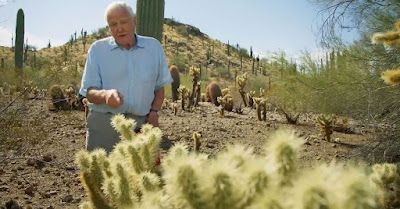From afar, the Teddy Bear Cholla looks like something out of a desert fairytale — fuzzy, golden, and almost huggable. But don’t let the name fool you. This cactus isn’t cuddly. In fact, it might just be one of the most dangerous “teddy bears” you’ll ever meet.
So, What Is a Teddy Bear Cholla?
Scientific name: Cylindropuntia bigelovii
Common nickname: Jumping Cholla
This unique cactus thrives in the arid landscapes of the southwestern United States, especially in places like Joshua Tree National Park and the Mojave Desert. It gets its name from its dense, teddy bear-like appearance — but its “fur” is actually made of barbed spines that detach easily.
Why Is It Called the “Jumping” Cholla?
No, it doesn’t literally leap — but it sure feels that way! The stems are so loosely attached that even the slightest brush will cause a segment to latch onto your skin, clothes, or gear. The spines have microscopic barbs, making them painfully difficult to remove.
A Painful Plant with a Purpose
Despite its weaponized looks, the Teddy Bear Cholla plays a valuable role in the desert ecosystem:
• Birds, like the cactus wren, often build nests inside it — safe from predators.
• It can reproduce when segments fall off and root themselves in the soil.
• It provides shelter for desert critters, and its blooms (yes, it flowers!) attract pollinators during the spring.
Tips If You See One in the Wild:
• Admire from a safe distance
• Don’t touch, even with gloves — the spines can go through fabric
• Use a comb or stick (not fingers!) to remove stuck segments
Final Thoughts
The Teddy Bear Cholla is a perfect reminder that things aren’t always what they seem. Beautiful, harsh, and fascinating all at once — it’s one of the desert’s coolest surprises. Just don’t try to hug it!










No comments:
Post a Comment